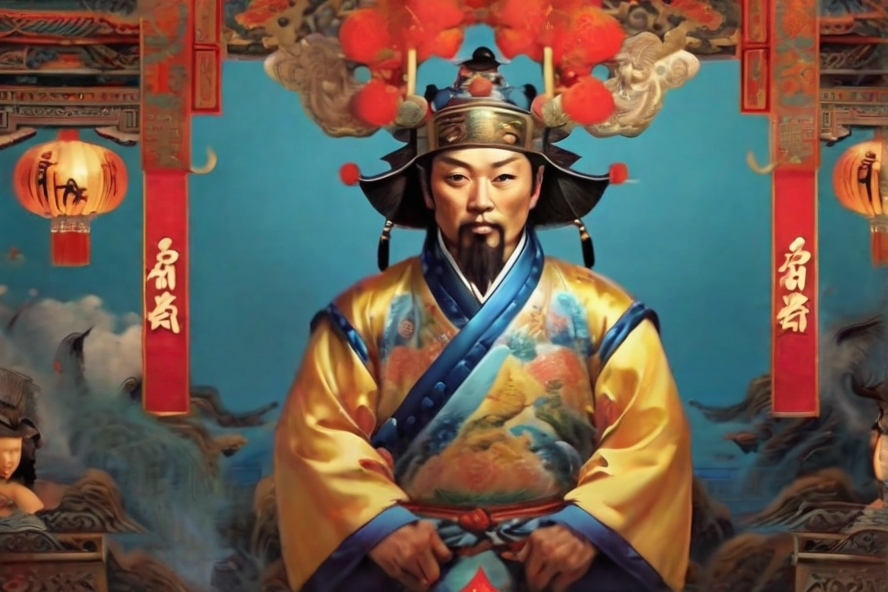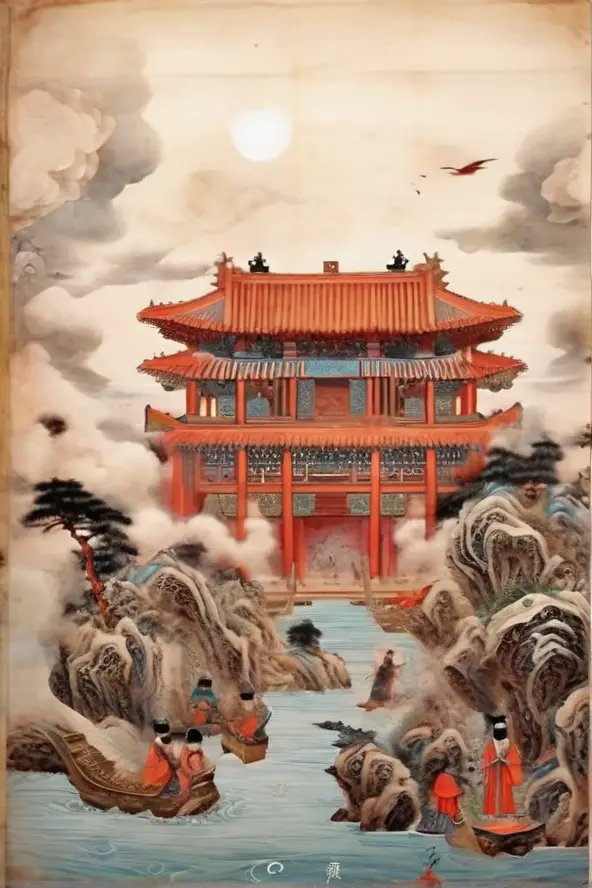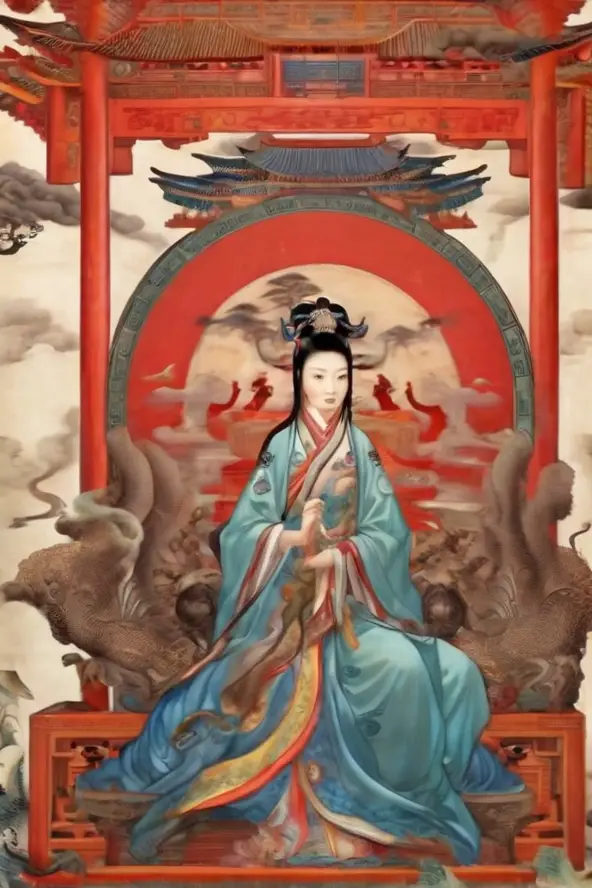
The Ming Dynasty, which spanned from 1368 to 1644, holds a significant place in Chinese history.
It marked a return to native Han Chinese rule and a revival of traditional culture and governance.
The dynasty’s name “Ming” means “brilliant” or “radiant” and was chosen to symbolize a new era of Chinese civilization.
In this blog post, we will explore 12 fascinating facts about the Ming Dynasty, shedding light on its achievements, challenges, and enduring legacy.
12 Facts About the Ming Dynasty
Establishment and meaning
The Ming Dynasty emerged triumphantly after the decline of the Yuan Dynasty, governing China for nearly three centuries.
The very name “Ming” carries profound significance, symbolizing the dawn of a new era in Chinese civilization.
This period marked a transformative chapter in the nation’s history, highlighting a return to native rule and the rejuvenation of traditional cultural values.
- Read also: An Ancient Chinese Civilization Timeline
- Read also: Exploring the Fascinating World of Chinese Mythology Gods
Cultural and architectural legacy
Renowned for its architectural prowess, the Ming Dynasty left an indelible mark on China’s landscape.
The construction of the iconic Forbidden City in Beijing stands as a testament to the dynasty’s cultural influence and artistic grandeur.
Moreover, the Ming rulers undertook extensive repairs and expansions of the Great Wall, solidifying its role not only as a defensive structure but also as a symbol of imperial strength.
Return to native rule
The Ming Dynasty signaled a pivotal return to native Han Chinese rule, marking a revival of traditional cultural norms and governance structures.
This shift was instrumental in reestablishing a connection with the roots of Chinese heritage, fostering a renewed sense of identity and pride among the populace.
Maritime expeditions
Under the visionary leadership of Admiral Zheng He, the Ming Dynasty embarked on groundbreaking maritime expeditions.
These journeys showcased China’s maritime prowess and cultural influence across vast regions.
Zheng He’s fleets reached as far as Southeast Asia, India, the Middle East, and Africa, promoting trade, diplomacy, and the projection of China’s might on the global stage.

Emphasis on confucian values
The Ming Dynasty’s administration was characterized by a profound emphasis on Confucian values.
This philosophical foundation influenced not only governance but also permeated various aspects of Ming-era society.
The commitment to Confucian principles left an enduring impact on art, literature, and technological advancements, shaping the cultural fabric of the time.
Founder’s humble origins
At the heart of the Ming Dynasty’s narrative lies the inspiring story of its founder, Zhu Yuanzhang.
Rising from humble beginnings as a poor peasant, Zhu Yuanzhang ascended to the throne with the reign title of Hongwu.
His remarkable journey symbolizes the dynasty’s commitment to meritocracy and the potential for individuals from all walks of life to contribute to the governance and prosperity of the nation.
Technological advancements
The Ming Dynasty, a pinnacle of technological innovation during its era, spearheaded colossal building projects and achieved notable advancements across various fields.
From engineering marvels like the Forbidden City to significant strides in agriculture and craftsmanship, the dynasty ushered in an era of progress and ingenuity.
Challenges and downfall
Despite its technological prowess, the Ming Dynasty grappled with formidable challenges that contributed to its eventual downfall.
Issues such as corruption, misrule, and a severe monetary crisis plagued the empire.
Internal strife, coupled with natural disasters and external invasions, weakened the dynasty’s foundations, leading to its ultimate collapse.
Population decline
A poignant consequence of wars, natural calamities, and widespread epidemics was a substantial decline in the population.
Between 1600 and 1644, an estimated 30% or approximately 50 million people succumbed to the combined impact of conflicts and health crises.
This demographic shift left an indelible mark on the social and economic landscape of Ming China.
Legacy and enduring impact
Despite its challenges and eventual demise, the Ming Dynasty’s legacy continues to thrive, particularly in the realms of art, architecture, and cultural identity.
The grandeur of the Forbidden City, the Ming’s artistic contributions, and their influence on traditional Chinese aesthetics persist as a testament to the enduring impact of this historical era.
Cultural influence
The Ming Dynasty’s cultural and political influence extended far beyond its borders, reaching East Asia and neighboring regions.
Through trade, diplomacy, and cultural exchanges, the dynasty left an indomitable mark on countries it interacted with.
Its influence is evident in the art, literature, and governance structures of regions that fell under the sway of Ming China.
Defensive focus
In contrast to expansionist ambitions, the Ming Dynasty adopted a defensive stance, emphasizing the protection of its borders.
The dynasty maintained and fortified the Great Wall as a bulwark against external threats, showcasing a commitment to safeguarding the territorial integrity of the empire.
Additionally, the dynasty reinforced the traditional civil service examination system, underscoring its dedication to meritocracy and governance through qualified officials.

- Read also: Unraveling the Medieval Era Timeline
- Read also: A Journey Through the Timeline of the Age of Exploration
Conclusion
The Ming Dynasty stands as a captivating chapter in Chinese history, marked by its cultural prowess, technological strides, and the complexities it confronted.
Despite its ultimate decline, the dynasty’s profound influence on Chinese civilization, evident in its contributions to art, architecture, and governance, remains a subject of admiration and scholarly exploration.
Exploring these 12 key facts about the Ming Dynasty offers invaluable insights into a pivotal era that has shaped the course of Chinese history.
FAQs
The Ming Dynasty marked a return to native Han Chinese rule, leading to a revival of traditional culture and governance. It also left a lasting impact on Chinese art, architecture, and technological advancements.
The Ming Dynasty faced challenges such as corruption, misrule, natural disasters, and internal rebellion, which ultimately contributed to its downfall.
The Ming Dynasty exerted immense cultural and political influence on East Asia and neighboring regions, leaving a lasting mark on the countries it interacted with.



